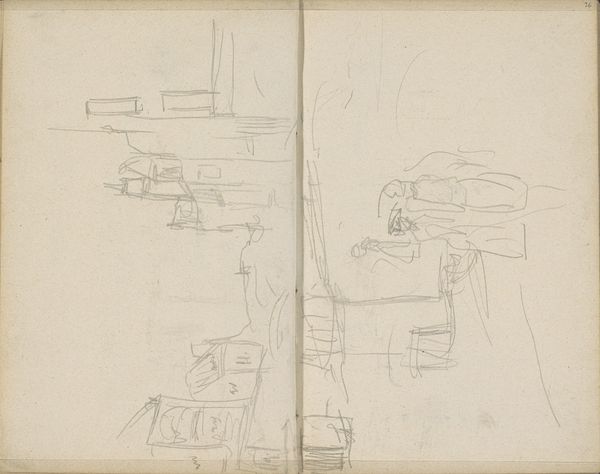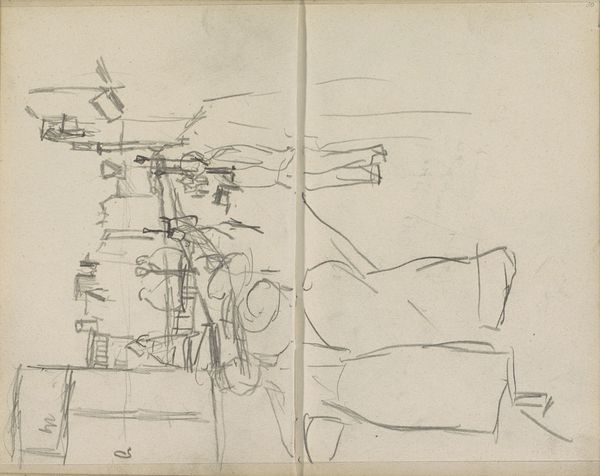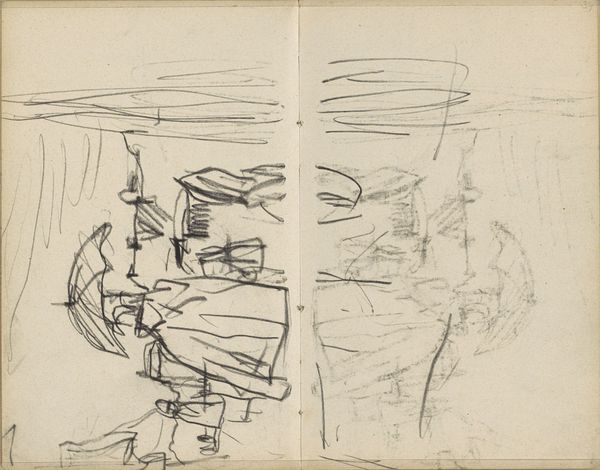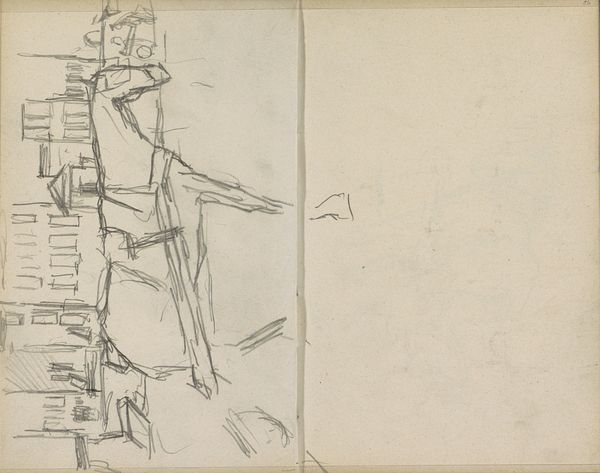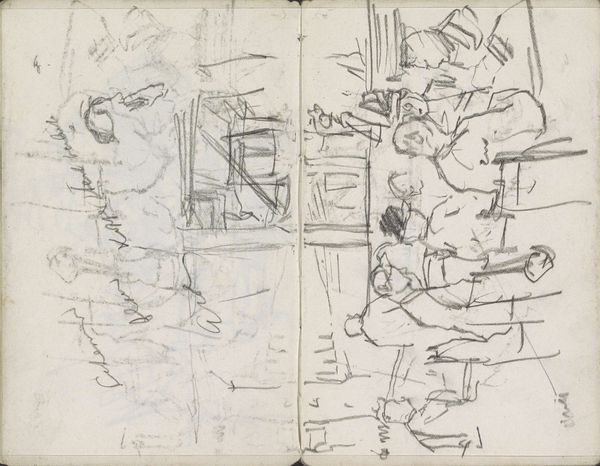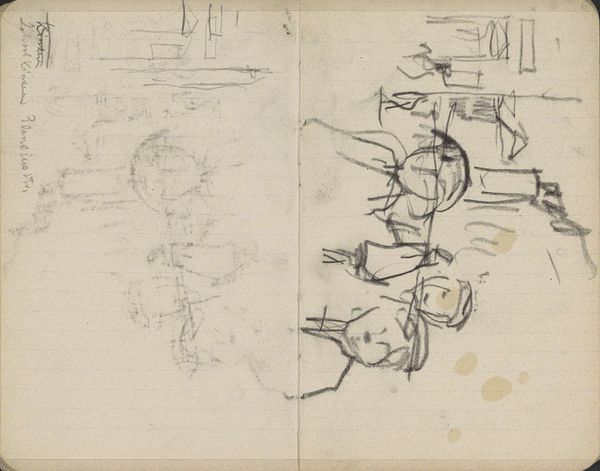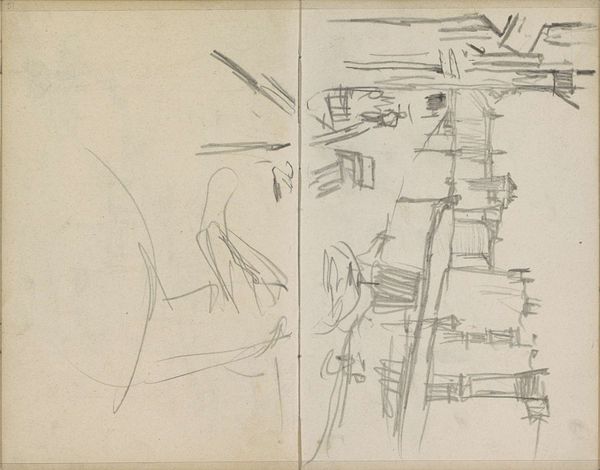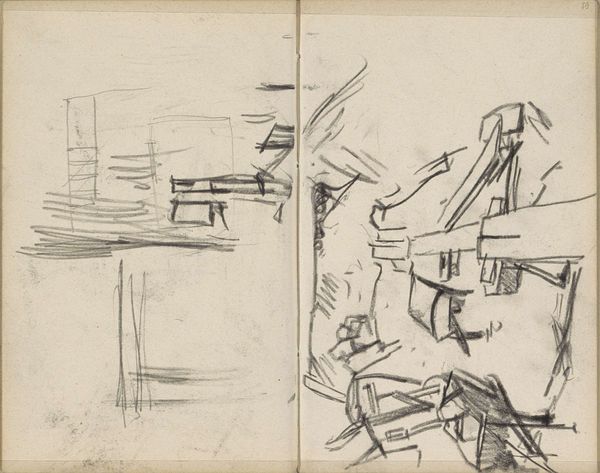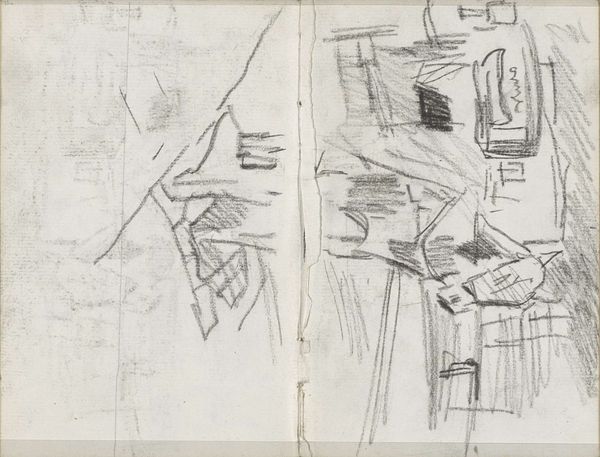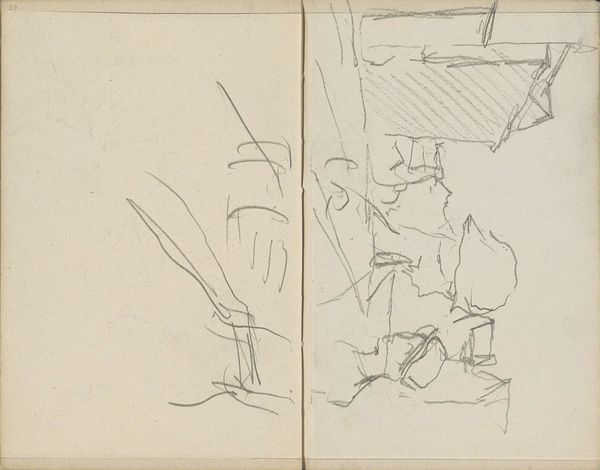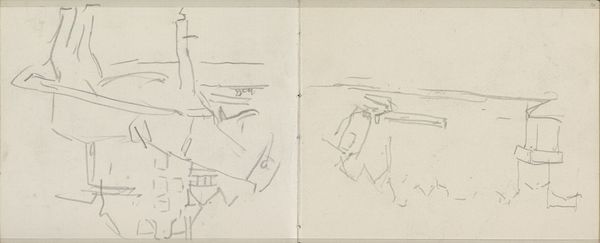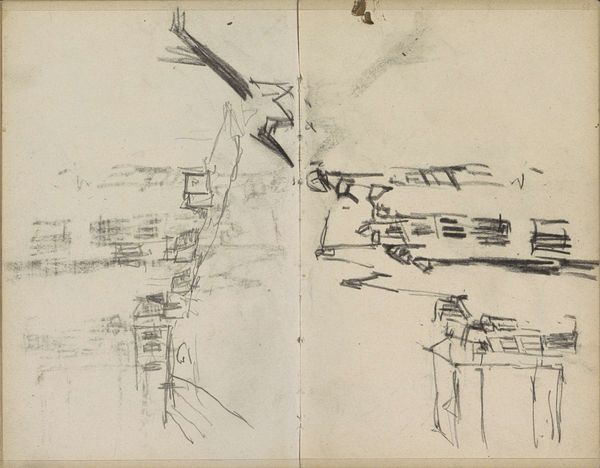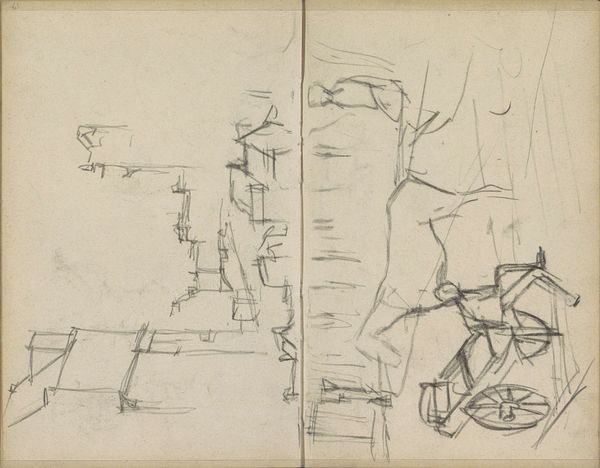
Gezicht op de Jansstraat te Haarlem met op de achtergrond de Sint-Bavokerk c. 1903
0:00
0:00
georgehendrikbreitner
Rijksmuseum
Copyright: Rijks Museum: Open Domain
Curator: I find myself drawn into the sketchy energy of this work by George Hendrik Breitner. It's titled "View of the Jansstraat in Haarlem with the Sint-Bavokerk in the Background," created around 1903. Editor: It feels incomplete, a fleeting impression caught with a pencil. The roughness speaks to me—almost frantic, as if he needed to capture the scene before it disappeared. Curator: Exactly! Breitner was very interested in capturing the bustling, rapidly changing cityscape. As we can see in this cityscape drawing on paper, his dedication to urban scenes reflects a broader shift in artistic interest toward modern life, where depicting industry, architecture, and everyday experiences became a dominant focus for some artists. This contrasted sharply with more classical subjects, echoing the public’s increasing engagement with such themes as societal development. Editor: And look at the material; just pencil on paper. No pretension. It underlines the accessibility of Impressionism. It's an aesthetic accessible to those involved in its manufacture: a move away from elaborate oil paintings reserved for the elite, towards materials accessible to all. This also questions established ideas on artistic creation, where speed and economy replace detail. Curator: That’s insightful, seeing the connection between the materials and the social shift. I think the seemingly unfinished quality also serves a deliberate purpose. Breitner likely used photography extensively for his compositions. Editor: So you believe that a piece like this is actually a quick study, potentially preceding something more worked through, demonstrating the various stages of a more protracted process and calling into question conventional divisions between "sketch" and "final"? Curator: Yes, exactly. The lack of polish invites viewers to become part of the artist's creative process—witnessing that very act of making. We become attuned to the evolving dialogue between what the eye beholds and what the hand creates through the art-making tools and techniques at its disposal. Editor: Viewing the Sint-Bavokerk spire standing distantly, combined with its evident sketch-like character and ordinary materials, my attention has now been shifted to reflecting upon what art, in all its states, actually symbolizes about a particular society or historical period. Curator: I concur entirely; art reveals layers when viewed with different lenses and considerations, don't you think?
Comments
No comments
Be the first to comment and join the conversation on the ultimate creative platform.
